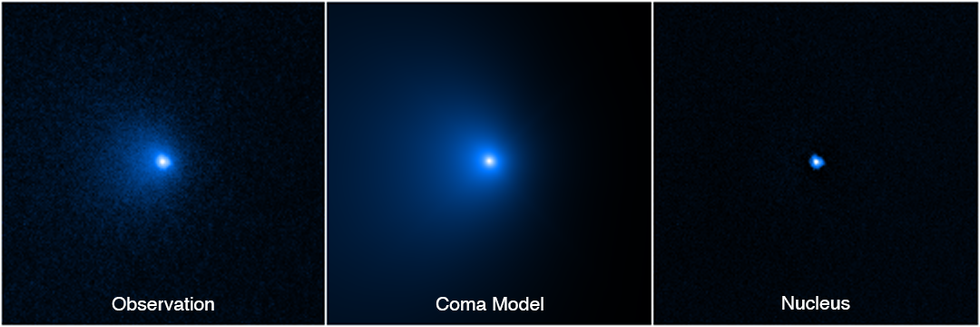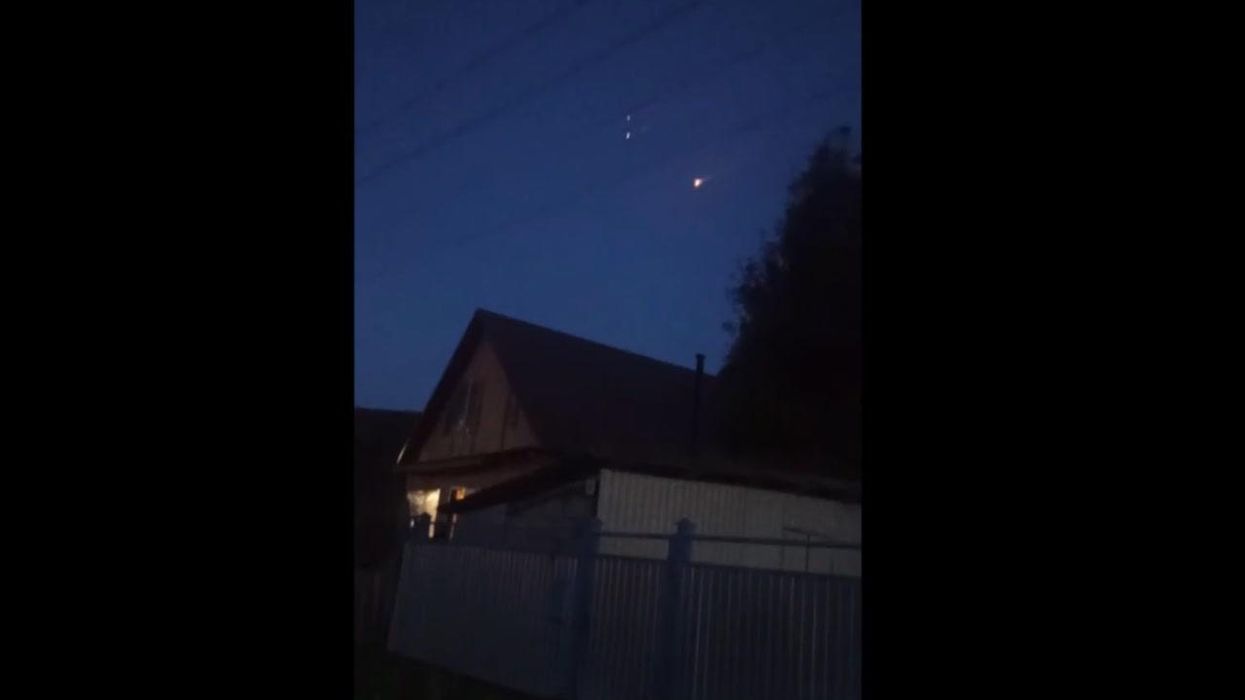Science & Tech
Sinead Butler
Apr 13, 2022
A large comet flies in the night sky in Gorny Altai
Viral Bear
Nasa has recorded the largest comet ever with the Hubble Space Telescope - and it's heading Earth's way.
At the core of the space rock, the icy nucleus is said to measure around 80 miles across - that's a whopping 50 times bigger compared to the heart of an average comet and weighing 500 trillion tons.
It has been named C/2014 UN271 (or Bernardinelli-Bernstein) and was first discovered 12 years ago by astronomers Pedro Bernardinelli and Gary Bernstein in 2010 when it was 3 billion miles from the Sun or the distance to Neptune.
Since its discovery, the comet is hurtling in our direction from the edge of our solar system at 22,000 miles per hour.
But not to worry, the comet doesn't spell doom for us here on Earth, as the comet will not come anywhere close to our atmosphere - a billion miles from the Sun to be exact (and this won't be until 2031) - which is the even further away from Saturn.
Sign up to our free Indy100 weekly newsletter
"This comet is literally the tip of the iceberg for many thousands of comets that are too faint to see in the more distant parts of the solar system," David Jewitt, a professor of planetary science and astronomy at the University of California, Los Angeles (UCLA), and co-author of the new study in The Astrophysical Journal Letters said.
"We've always suspected this comet had to be big because it is so bright at such a large distance. Now we confirm it is."
Scientists have been tracking the space rock, with help from the Hubble Telescope to get a read on its huge size, though this isn't an easy process because the solid nucleus is surrounded with a layer of dust and gas (coma) that covers it up from view with the distance making it tricky to see clearly.
Though thanks to the Hubble images showing a bright light at the nucleus and a computer model that can adjust the dust to fit the images and reduce the dusty coma's glow so a solid "star-like nucleus" is left behind.

The brightness of the nucleus was then compared to earlier observations by Atacama Large Millimeter/submillimeter Array (ALMA) in Chile, while both recorded the same size, it suggested a darker nucleus surface than previously thought.
"It's big and it's blacker than coal," Jewitt added.
On top of all this research, the comet is also thought to be billions of years old, originating from the Oort Cloud and has been falling toward the Sun for well over a million years, so is like an antique from our earlier solar system.
Have your say in our news democracy. Click the upvote icon at the top of the page to help raise this article through the indy100 rankings.
Top 100
The Conversation (0)














